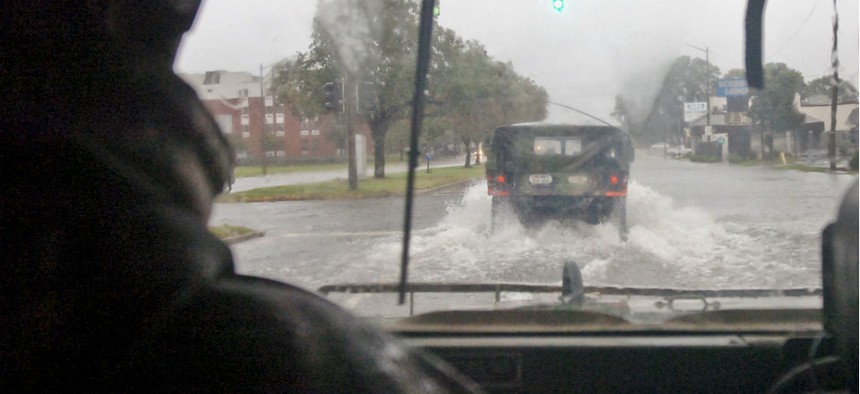FEMA Ups Its Game in Sussing Out Phony Aid Claims
GAO reports Hurricane Sandy-related improper payments are down compared with those for Katrina.
New controls put in place following Hurricane Katrina in 2005 have allowed the Federal Emergency Management Agency to sharply reduce payments to individuals making fraudulent damage claims, a watchdog reported.
In dispensing more than $1.4 billion to victims of the 2012 Hurricane Sandy, FEMA whittled its rate of potential improper payments down to 2.7 percent, or $39 million, compared to 10 percent–22 percent in the aftermath of Katrina, the Government Accountability Office said in a report released Friday.
Auditors’ analysis of disbursement to 183,000 affected people under the federal Individuals and Households Program—which helps disaster victims with home repairs and rent—found weakness, however, in FEMA’s ability to validate the eligibility of claimants through consulting the full Social Security Administration Death Master File.
FEMA officials, after reviewing GAO's findings, reported that at least $6.1 million of the $39 million in at-risk payments after Sandy were not improper or fraudulent, an assertion the watchdog was unable to confirm.
The improved improper payment rate stemmed from use of identity validation tools when claimants register for aid, GAO said. “FEMA also hired contractors to inspect damaged homes to verify the identity and residency of applicants and that reported damage was a result of Hurricane Sandy,” the report said.
FEMA has improved data sharing programs for working with state governments to avoid, for example, making payments to individuals who also have relevant private insurance. Many damage claims are accompanied by self-reported information, and GAO identified 534 individuals receiving together more than $2.3 million in home repair and personal property assistance “who said they did not have private insurance but had mortgages that require such insurance.”
GAO recommended that FEMA collaborate with the Social Security Administration to obtain additional data to detect duplicative assistance, and that it do more to verify whether recipients have private insurance. FEMA agreed.




